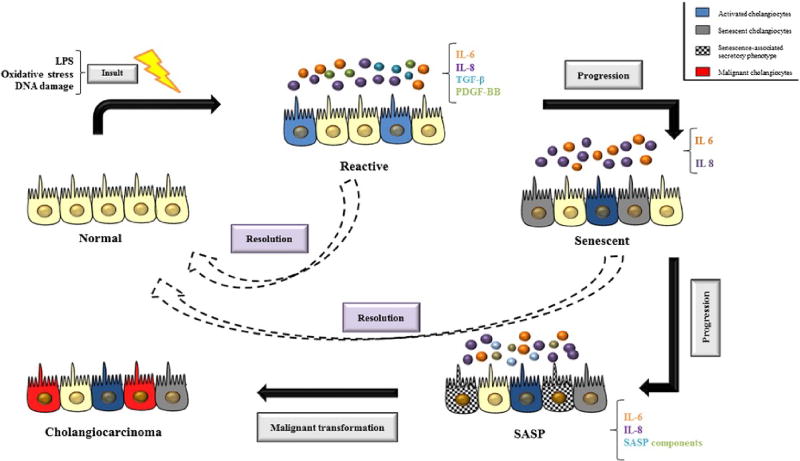Fig. 3.
Schematic representation of cholangiocyte plasticity. Endogenous and exogenous insults can activate normal cholangiocytes which are characterized by enhanced secretion of pro-inflammatory cytokines and growth factors that recruit both immune and mesenchymal cells to promote biliary remodeling. After insults, proliferation is also activated as a consequence of cholangiocyte death (lysis and/or apoptosis) and if the cellular injury continues, cholangiocytes can become senescent. Senescent cholangiocytes are under permanent cell cycle arrest and apoptosis resistant. Ongoing cellular injury leads to continuous generation of senescent cells leading to progression into a senescence-associated secretory phenotype. This eventually leads to tissue dysfunction and tumor promotion. The dashed arrows suggest that reactive and senescent cholangiocytes can go through repair mechanisms that are mediated by several pathways, with Hedgehog (Hh) signaling pathway being one of the most important. Abbreviations: IL, interleukin; LPS, lipopolysaccharide; PDGF-BB, platelet-derived growth factor-BB; SASP, senescence-associated secretory phenotype; TGF-β, transforming growth factor β.

